The National Conservation and Storage Centre (OMRRK), built as part of the Liget Budapest Project, has been named best public service development in Europe at the International Property Awards (IPA) – László Baán, Ministerial Commissioner for the Liget Budapest Project, announced.
“With this, the Liget Budapest Project has become a unique development in the history of such prizes, as it is the first cultural urban development project the elements of which have won three prestigious awards: before the OMRRKthe new Museum of Ethnography was named the best public building in the world in 2018 and the House of Hungarian Music won the award for the best international public building in 2019," noted Benedek Gyorgyevics, CEO of Városliget Zrt., the contractor in charge of the Liget Budapest Project.
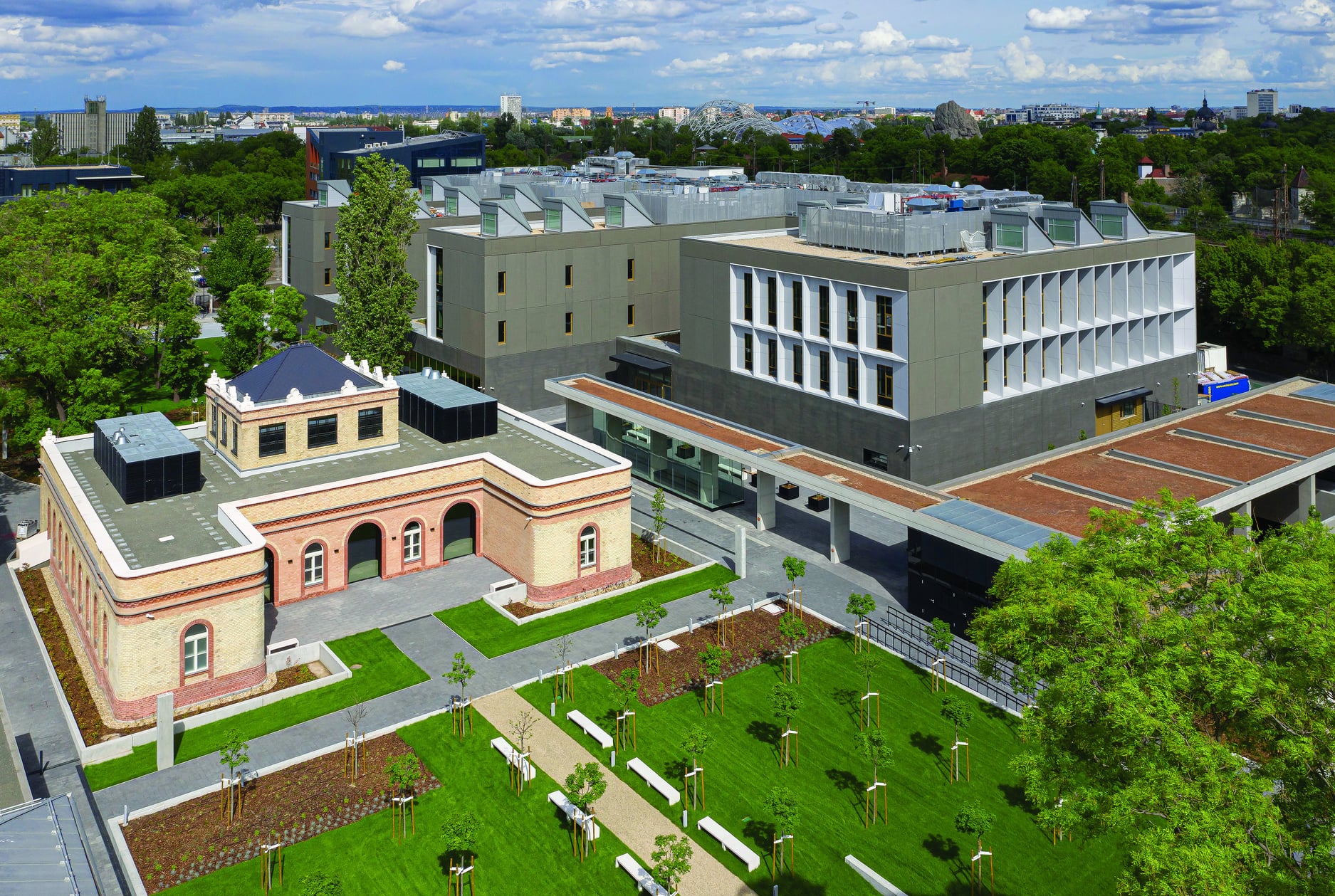
A new 13,000 square meter park called Bókay Garden, which can be visited freely during opening hours was established around the centre
(Photo: Városliget Zrt.)
The building, constructed as part of the Liget Budapest Project, based on the plans of the Narmer Architecture Studio, is one of the largest museological background institutions in Europe. The centre houses the collections of the Museum of Ethnography, the Museum of Fine Arts and the Hungarian National Gallery. Located in Szabolcs Street, next to Városliget, the centre was opened in 2020. Modern restoration workshops were created within its walls, and recently, the collections have also been moved into the new storage areas.
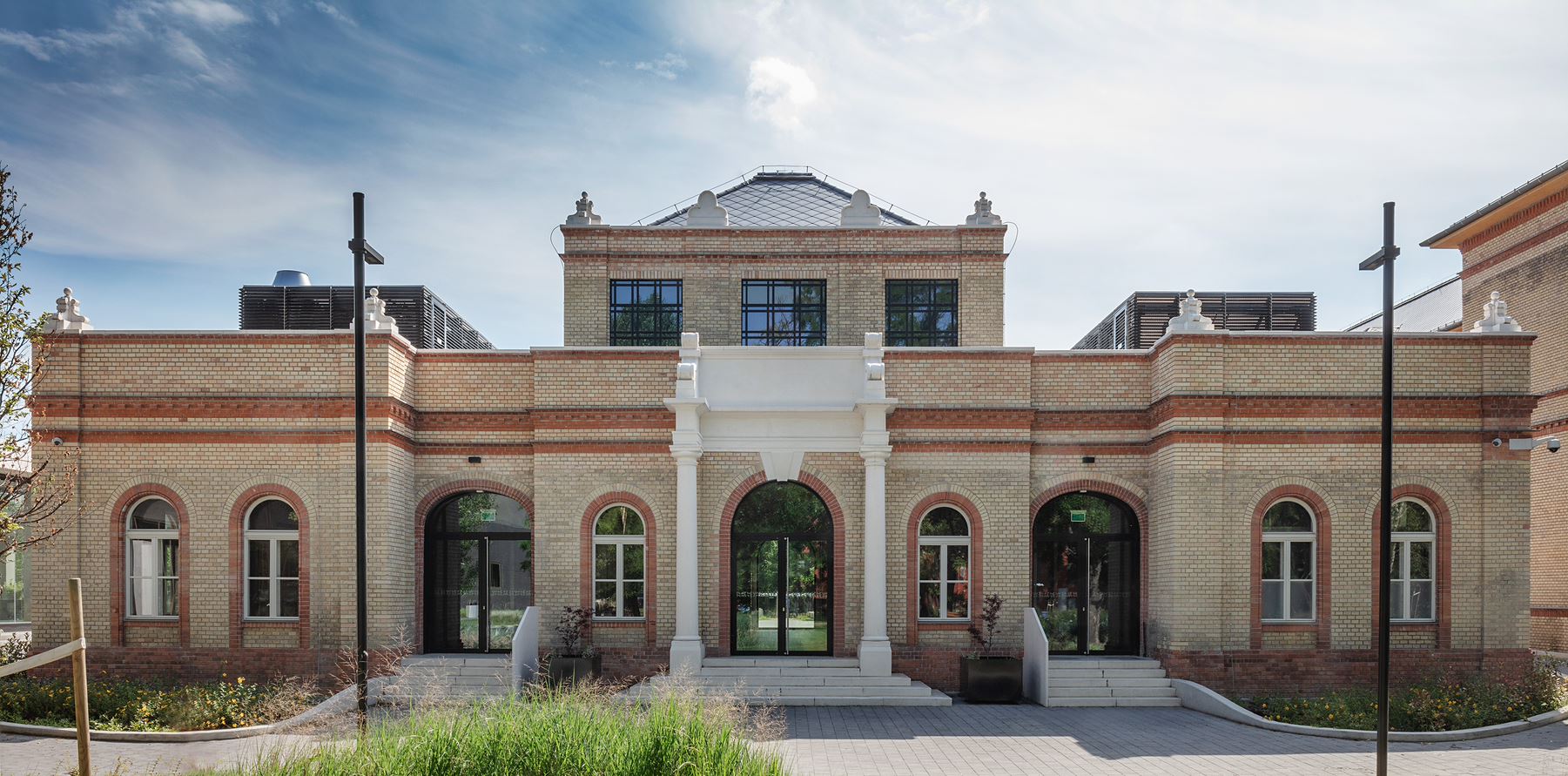
The building of the National Conservation and Storage Centre was completed in 2019 on Szabolcs Street next to Városliget, incorporating a former hospital (Photo: Városliget Zrt.)
The prestigious award is presented by a panel of eighty international judges in ten different categories, covering Africa, Asia and Oceania, the Middle East countries, Canada, the Caribbean, Central and South America, the United States, Europe and the United Kingdom. The panel examines project design, quality, innovation, uniqueness, and the project's commitment to sustainability in each case. The OMRRK building was chosen as a winning project among entries on the national level.
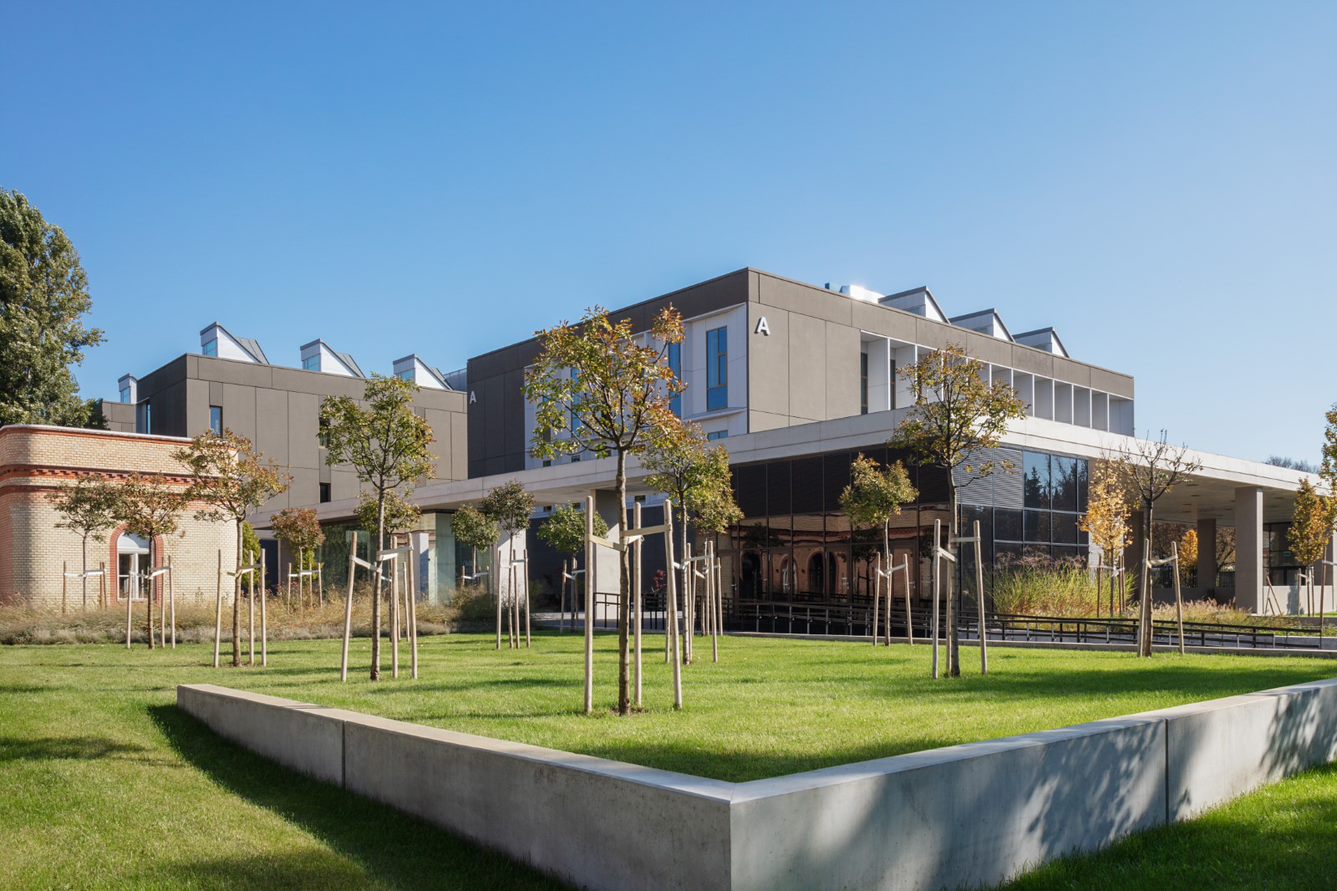
The development created harmony between old and new buildings (Photo: Városliget Zrt.)
“The panel's decision also reflects the fact that with the construction of the OMRRK, not only will our public collections be stored in better conditions than ever before, Hungary has closed a decade-old gape to the rest of Europe. The Hungarian project can be compared to the newly completed facilities of the British Museum in London and the Hermitage in Saint Petersburg, and the background institution under construction at the Louvre in Paris in terms of equipment, tools and capacity,” claimed László Baán, Ministerial Commissioner for the Liget Budapest Project.
The Liget Budapest Project has won several awards
The prestigious award is not the first success achieved by the project that aims to renew City Park. Europe's largest cultural investment has been in focus many times in recent years. In 2019, the House of Hungarian Music was named “Best International Public Building” at the International Property Awards after winning the “Best Public Building in Europe” award. This year it was chosen as the best music-themed real estate development in the world at the Music Cities Awards.
In 2018, the new building of the Museum of Ethnography was named not only the best public building in Europe, but in the world at the International Property Awards, and even received the World’s Best Architecture Award. In 2017, at the MIPIM real estate trade fair in Cannes, the Liget Budapest Project was awarded as the best major urban development project in Europe in the Best Futura Mega Project category, which collected the largest and most comprehensive projects in the continent. This summer, the largest renovation in the history of the Museum of Fine Arts – also completed within the framework of the Liget Budapest project – won the Europa Nostra Award, a prestigious awards honouring the protection of cultural heritage.
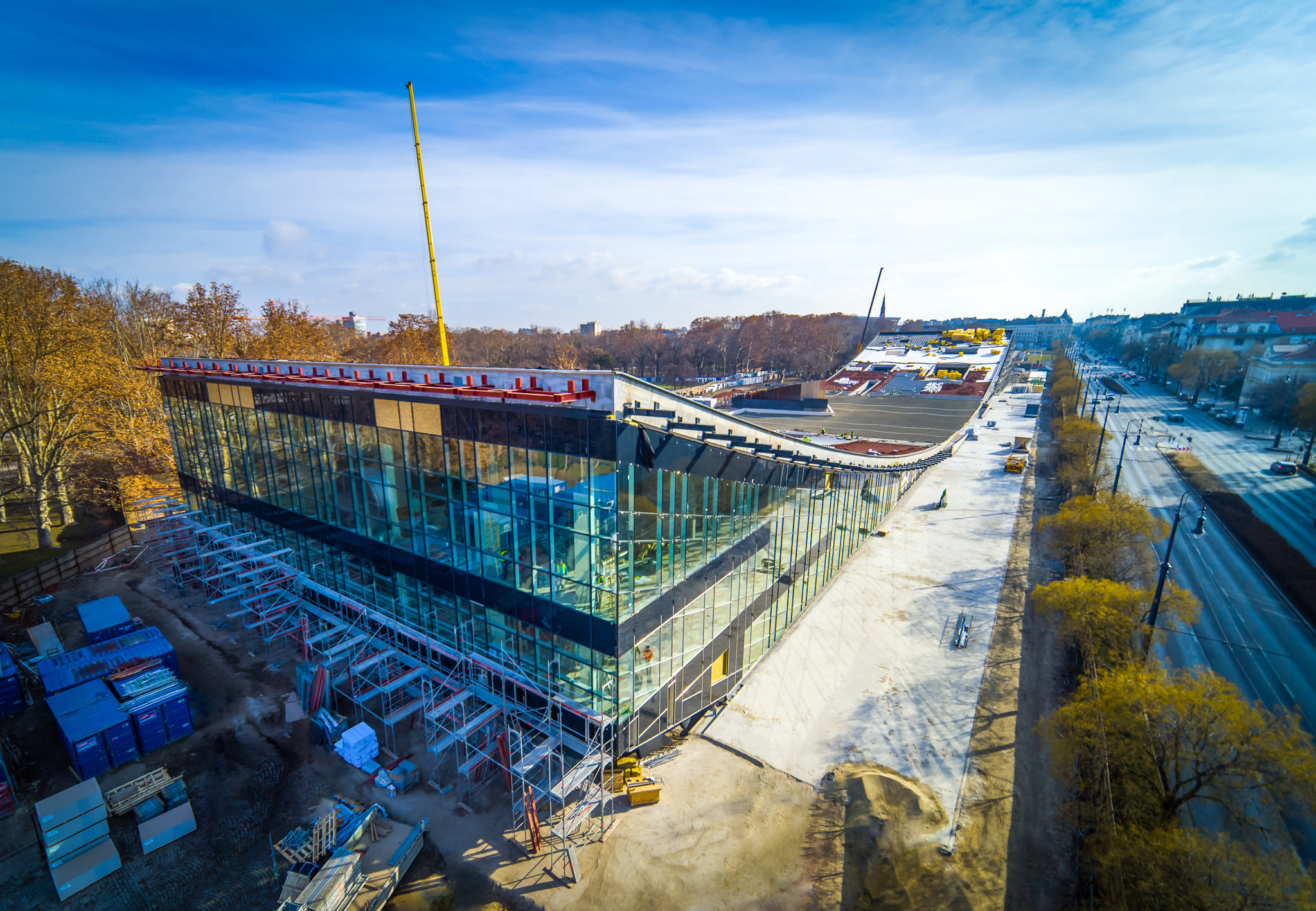
In 2018, the new Museum of Ethnography was named not only the best public building in Europe but the world at the International Property Awards, and even received the World's Best Architecture Special Award (Photo: Városliget Zrt.)
“The Liget Budapest Project is a unique park development, cultural investment and heritage protection effort that rightfully garners respect and wins awards in Munich, London, Cannes. These are the Oscars and Nobels of urban development, and this recognition, this special attention, highlight how such well-thought-out, concept-driven projects are.
We are proud that three developments of the Liget Budapest Project have now been awarded by the international paned at the International Property Awards. (...) We have also written history, as in the existence of the IPA no urban development project has achieved such outstanding results,” stated an elated Benedek Gyorgyevics, CEO of Városliget Zrt.
What purpose does the building serve?
The National Restoration and Museum Storage Centre (OMRRK) was built within the framework of the Liget Budapest Project. Standing on Szabolcs Street near City Park the 37-thousand square metre building houses storerooms, the Research Institute for the History of Central European Art, research rooms, restoration studios and a visitors' centre.

The workshops, offices, studios and laboratories provide all the tools needed for professional work (Photo: Városliget Zrt.)
The nearly 30,000-square-meter main building provides the infrastructure for the preservation and scientific examination of more than three hundred thousand works of art and artefacts from the Ethnographic Museum, the Museum of Fine Arts and the Hungarian National Gallery. László Baán said that the project is a long-term, reassuring solution to the problems that these public collections have faced for many decades.
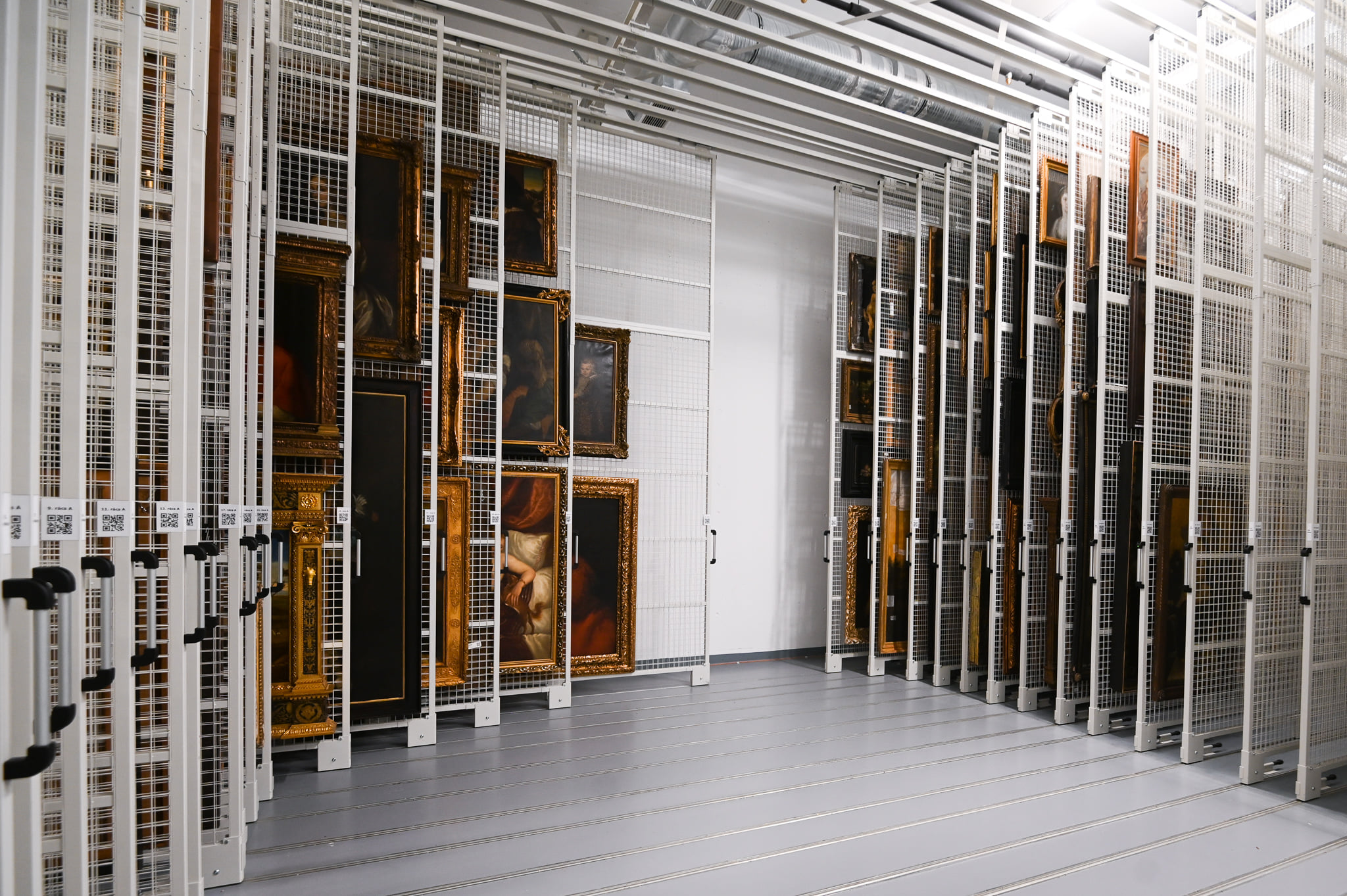
The building is a long-term, reassuring solution to the collection storage problems these museums have faced for decades (Photo: Városliget Zrt.)
The largest facility in the OMRRK complex is the building that houses warehouses, restoration and conservation workshops, providing modern and safe working conditions on four floors below ground and three above. The workshops, offices, studios and laboratories in the building provide the best possible scientific and technical tools for the museum professionals working within their walls.
The building that once served as the Jewish hall of worship in the old hospital, but was later transformed into an admissions area has been renovated as a visitor centre covering over a thousand square meters. Among others, a conference room has been created in the building while taking monument protection into consideration. The complex will also house the Research Institute for the History of Central European Art on more than 3,000 square metres, where a book and document archive will support researchers.
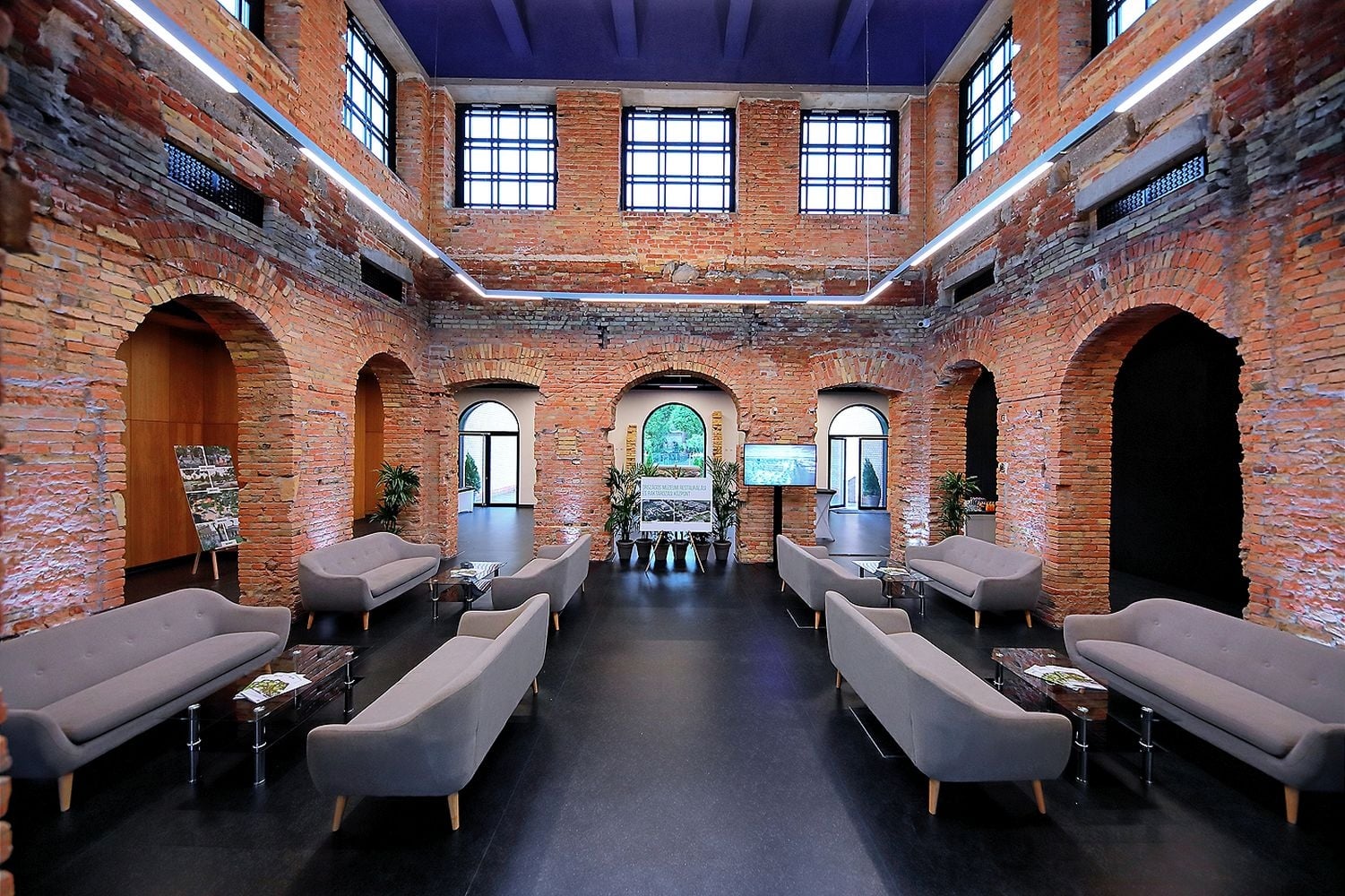 The two valuable old buildings on the plot, designed by Vilmos Freud, were renovated according to conservation laws (Photo: Városliget Zrt.)
The two valuable old buildings on the plot, designed by Vilmos Freud, were renovated according to conservation laws (Photo: Városliget Zrt.)
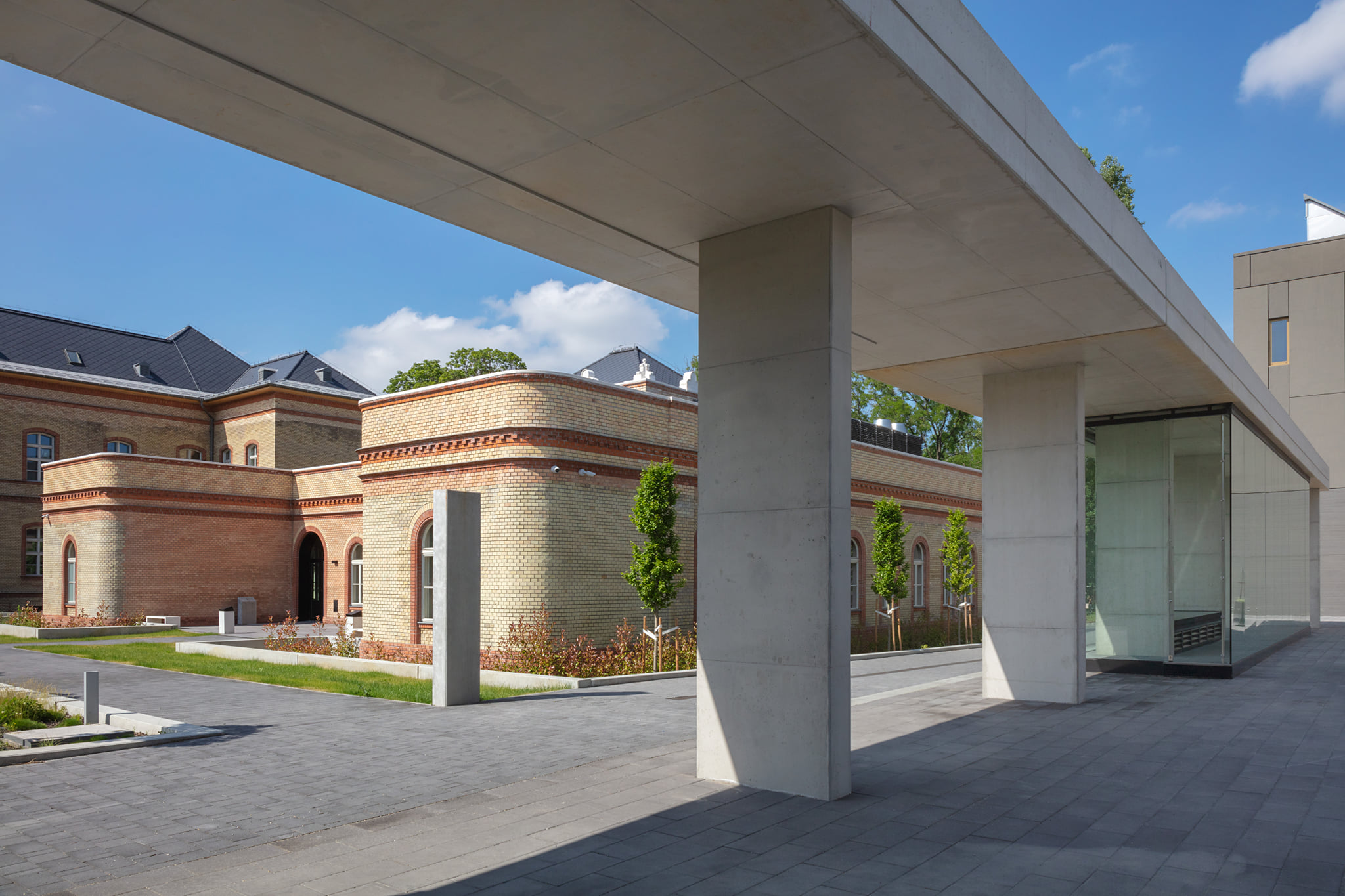
The OMRRK building was chosen as a winning project among entries on the national level (Photo: Városliget Zrt.)
The project aimed to achieve a symbiosis between the old and new buildings, through plans drawn up by the Ybl-Prize-winning architect, Zsolt Vasáros and the Narmer Planning Studio. The two valuable buildings on the site, designed by Vilmos Freund, were renovated according to historical monument conservation laws. The new building's structure and materials fit into the 19th-century surroundings of the smaller pavilion-like buildings of the hospital. Its simple construction and classic proportions are meant to evoke the character of timelessness and stability. The complex also includes a new 13,000 square metre park called Bókay Garden, that the public can visit freely during opening hours,” added Attila Sághi, Chief Technical Officer of Városliget Zrt.
A spectacular video of the building is available here.
Source: Városliget Zrt. | Abridged in translation
Cover photo: National Conservation and Storage Centre named best public building in Europe (Photo: Városliget Zrt.)

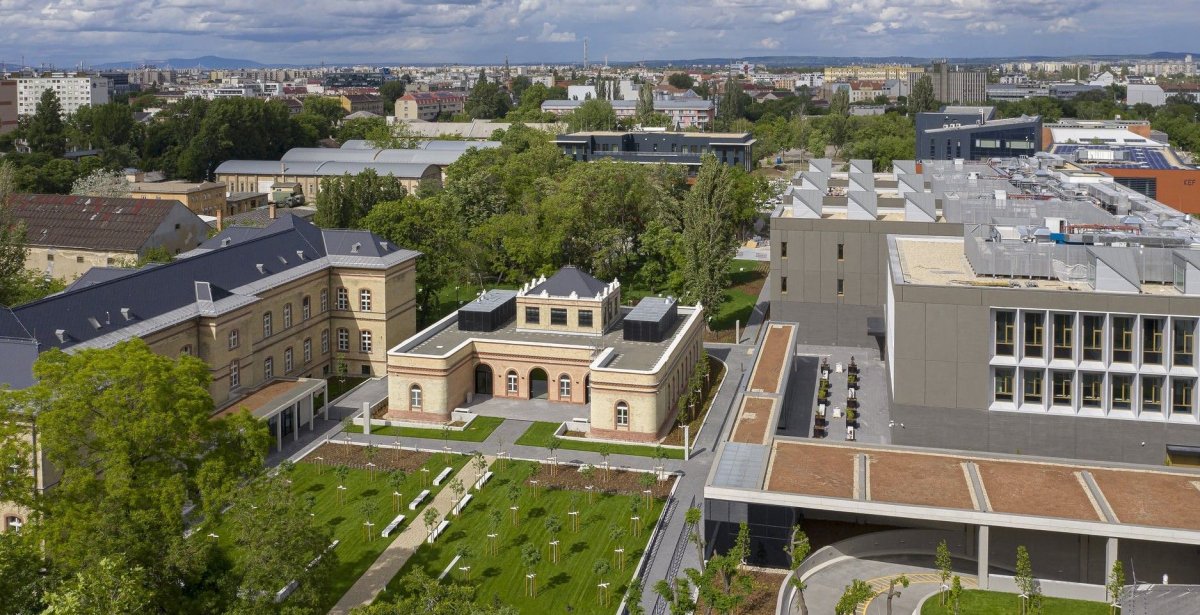
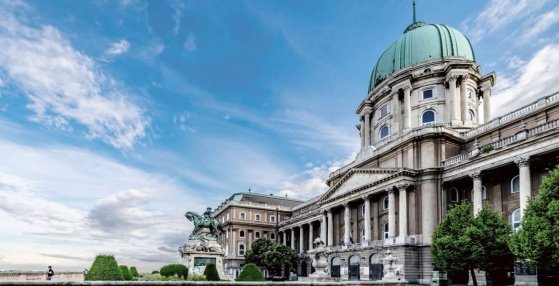
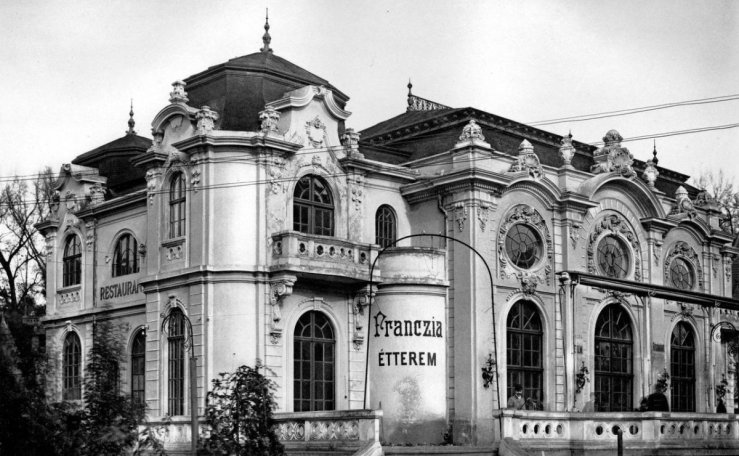


































Hozzászólások
Log in or register to comment!
Login Registration